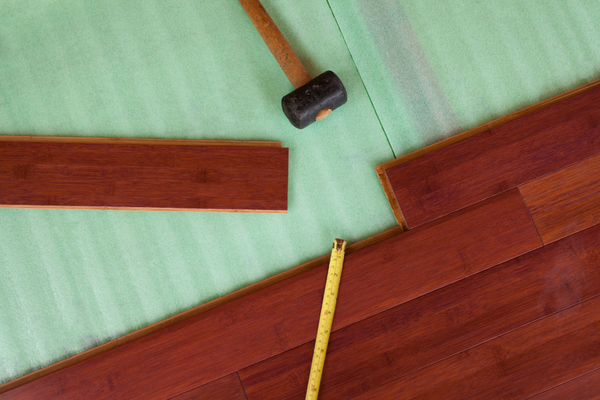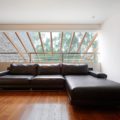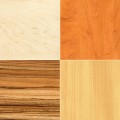How to Install A Bamboo Floor
Replacing old flooring with new bamboo is an excellent way to brighten your space with an eco-friendly material. Also unlike most types of wood, bamboo flooring is in plentiful supply and simple to replenish. However, if you’ve never purchased or installed this material before, you may have a few questions. Below are three different articles which outline tips and techniques to consider if you want to install a bamboo floor!
Resources to Help You Install a Bamboo Floor
Installing Over a Wood Sub-Floor
So you’ve weighed all the pros and cons of bamboo flooring, chosen your perfect material, and now you’re ready to install it. Follow this guide to learn how to install bamboo on a wood subfloor, and you’ll have brand new floors in no time!
Installing Over a Concrete Sub-Floor
Learn about the installtion requirements and tools needed before you start your DIY project. We’ll walk you through our practical tips for installing bamboo, and how to take care of it once you’re finished.
Floating Method – Glueless-Click
When choosing bamboo flooring for your home, it’s important to know that bamboo will scratch and dent. Our guide will help you install glueless-click bamboo flooring yourself with the utmost care.







Paula martin
I have no idea what this urethane stuff is I’m to us to adhere my bamboo floor to my 20 yr old concrete. How is it spread n how fast does it dry?
Oyedepo olusegun
Your sit blockage is a great inspiration to prospective project owners like us ..keep it up!
Edith
Need installation instructions. Bamboo flooring will be installed directly on top of 4×4 glossy tile (this is the existing flooring in a bathroom) location is in Southern California approx. 4 miles from the ocean. We do not have present humidity issues.
Thank you for your response. Edith
Pingback: Flooring Blog
June Davis
Can bamboo be installed over a wood floor?
MN
I have no experience to back my opinion, but my inner sense of justice says: sue them for the full cost of reinstalling
Anthony Bermudez
A professional flooring company (Capital Carpets and Tile) installed Solid Carbonized Bamboo (3in.) flooring (Floorage) in my home in October 2010. They deposited the product in my home for acclimation about 3 days prior to installation. They took a moisture reading in two (2) spots over the 880 sqft of area to be covered. The reading at the time was stated by Capital to be a “4”. While preparing the concrete sub-floor at least 5 areas required leveling concrete to be used, with each area being about 6′ feet in diameter.
I’m not sure if it is relevant, however, this bamboo installation replaced an older laminate floor that was damaged as a result of a water leak (fridge ice maker water line).
After 3-4 months we began to notice dark discoloration along the long and short seams of the bamboo in a couple areas. In the 2 months since, the discoloration has spread to over a dozen (seemingly random) locations across the entire 880 sqft installation area. We reported the issue to Capitol, who sent an inspector, who concluded the Bamboo product was not defective. However, the inpsectors reports states “There is a high level of moisture in the floor that is locally initiated”. When I asked Capital to explain this statement, they said there is a high level of moisture coming from the concrete subfloor, which they apparantly did’nt detect in the moisture inspection as stated above.
I asked Capital how the floor was installed and I was told it was glued down using Bostiks Best Glue. I called Bostiks cusotmer service and explained what I was experiencing, how Capital installed the product and inquired whether the product should just be glued to the concrete subfloor. Bostiks technical specialist said this was a common approach, however, that in higher moisture areas (I live in South Florida), that their Bostiks Concrete Subfloor Vapor Sealant should be considered.
Now I’m not a flooring expert and my comments above are near verbatim from what I’ve been adivsed. But I’m at a complete loss as to how a reputable company (Capitol) can install a floor and miss that there is a moisture problem, that has produced such random discoloration damage; or not consider or advise me that in a moisture laden environment like south florida, that the best way of installing a natural wood product would be to first seal and then glue the product to the concrete subfloor.
I do have a friend that does this type of contract work for a living. He amost choked me when he heard that I let (Capitol) glue the floor straight to the concrete subfloor. He was like “I can provide you dozens of testimonials from my clients that had the same thng happen to them here in south florida”. He also said the same thing as the Bostiks technical specialist…”seal then glue; which the the hardwood equivelent and using rubber vapor barriers under laminate flooring.
My question is whether the installers (Capitol) did right by me in just glueing the floor down and not proposing to seal the floor, considering the envronement and the fact that there had been previous water damage in my home?
Waht would you guys recommend as the right way to go? Thanks!